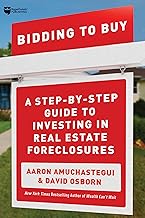Summary of "This Housing Correction Could Last Years"
Summary of “This Housing Correction Could Last Years”
Presenter: Dave Meyer (On the Market)
Key Topics Covered
- Definition and distinction between a housing correction and a crash
- Current state of the U.S. housing market with regional and price-tier breakdowns
- Macroeconomic context: inflation, mortgage rates, affordability, business cycle phases
- Investment strategies and risk management during a correction
- Outlook on duration of the correction and future price expectations
Finance-Specific Content
1. Correction vs. Crash in Housing Market
- Crash: Rapid, widespread price declines of at least 10-15% nominally within a short period (e.g., 2008-2009 crash saw ~20% drop).
- Correction: Slower, modest price declines or flat growth, typically 3-10% over several quarters or years, representing normalization after overvaluation.
- Housing market crashes are rare; only one major crash in 100+ years (2006-2009).
- Current market is in a correction, a normal business cycle phase following a peak.
2. Current Market Data and Regional Trends
- Nominal home prices (not inflation-adjusted) are slightly up (~1.7-2% YTD), per Case-Shiller, Redfin; Zillow shows near flat.
- Real home prices (inflation-adjusted) are down approximately 1% due to inflation (~3% inflation rate).
- Widespread cooling in almost all regions:
- Strongest markets (Midwest, Northeast: Detroit, Milwaukee, Rochester, Hartford) still show modest positive nominal growth (~3-4%), but real returns are near zero or slightly positive (~1%).
- Major markets in Florida, Texas, California, Arizona, Colorado, Washington, Oregon are flat or negative nominally.
- Price tier breakdown:
- Upper-priced homes: nominal growth slowed from 5% to 6% year-over-year.
- Mid-priced homes: down from 4.7% to 2%.
- Low-priced homes: declined from 4.5% to negative 1%.
3. Macroeconomic Context
- Mortgage rates remain elevated (~6.35%), down from ~7.15% at start of year, but still high enough to limit affordability.
- Affordability is at a 40-year low, driving the correction.
- Business cycle phases explained: Expansion → Peak → Correction → Bottom.
- Correction’s role: restore affordability through price declines, wage growth, or mortgage rate reductions.
- Inventory is rising (~20-25% year-over-year increase in active listings; 8-10% increase in new listings), but no flood of inventory or forced selling.
- Foreclosures and delinquencies remain low; slight upticks in FHA and VA loans (15% of market), but no systemic risk.
- Sellers are reluctant to list properties amid falling prices, which limits inventory growth and supports market stability.
4. Risk Management and Investment Strategy
- Assume flat nominal home price appreciation and flat rent growth for 2025 and near term.
- Focus on precision in acquisitions: buy only the best deals in great locations at great prices.
- Prioritize assets that cash flow well to hold through the correction.
- Increased inventory means more choice and potentially better cash flow deals.
- Avoid panic selling; paper losses are normal in corrections and only realized upon sale.
- Hold quality assets to benefit from eventual market recovery.
- Expect a “Great Stall” lasting several years, with real home prices stagnant or declining before growth resumes.
5. Outlook and Timeline
- Real home prices peaked in 2022 (~38 months ago).
- Historical data suggests it can take 5-9 years or more for real home prices to recover after rapid appreciation periods like COVID.
- Mortgage rates likely to stay in the mid-to-high 6% range for at least 6 months, barring aggressive Fed intervention (e.g., buying mortgage-backed securities).
- Wages may rise, but uncertainty remains (e.g., impact of AI on jobs).
- Low probability of crash unless unemployment spikes or mortgage rates rise sharply again.
- Next episode will feature a panel with James Dard, Henry Washington, and Kathy Fecky to discuss tactical responses for buyers and sellers.
Explicit Recommendations & Cautions
- Do not panic; correction is normal and healthy for market.
- Prepare for flat or slightly declining real prices for the next few years.
- Be precise and patient with acquisitions; focus on deals that cash flow.
- Avoid selling quality assets out of fear of paper losses.
- Monitor mortgage rates, inflation, and unemployment as key risk factors.
- Understand nominal vs. real price dynamics for realistic investment expectations.
Disclaimers
This summary is not financial advice. The presenter shares personal views and data-driven probabilities. Market timing is difficult; scenarios could change with macroeconomic shifts. Individual investment decisions should consider personal circumstances and risk tolerance.
Presenter: Dave Meyer, On the Market
Category
Finance
Share this summary
Featured Products

The Only Real Estate & Rental Property Investing For Beginners Book You'll Ever Need (2 in 1): Close Your First Deal, Easily Manage Properties, & Create Financial Freedom (Start A Business)

Calculated Industries 3405 Real Estate Master IIIx Residential Real Estate Finance Calculator | Clearly-Labeled Function Keys | Simplest Operation | Solves Payments, Amortizations, ARMs, Combos, More

Stock Market Maestros: The winning habits, strategies, and mindsets of the world's best investors

Buy, Rehab, Rent, Refinance, Repeat: The BRRRR Rental Property Investment Strategy Made Simple

Bidding to Buy: A Step-by-Step Guide to Investing in Real Estate Foreclosures